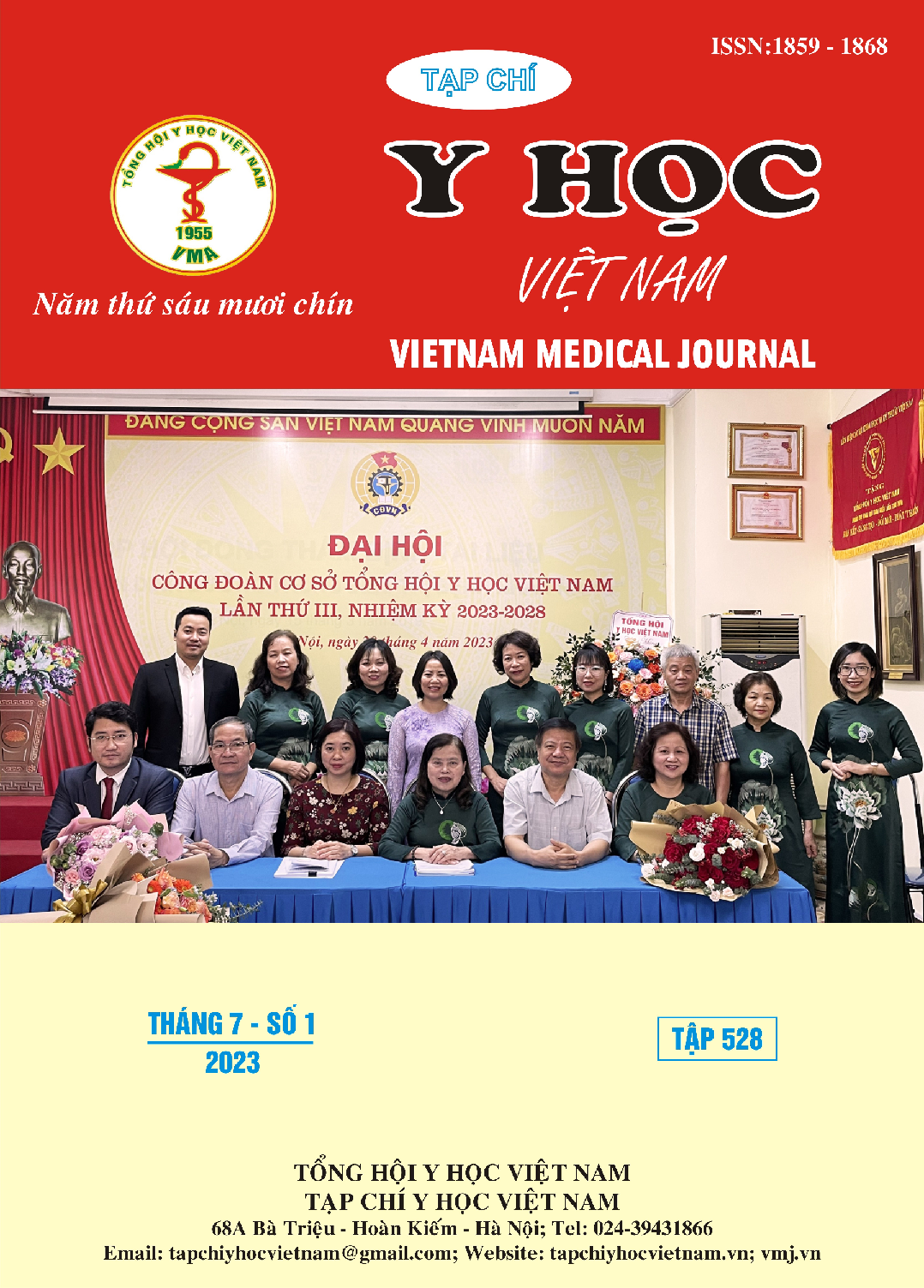THE DISTRIBUTION OF SEROTYPES AND VIRULENCE – ASSOCIATED GENES OF STREPTOCOCCUS SUIS IN HUMANS
Main Article Content
Abstract
Background: Meningitis and septic shock are two of the most common symptoms caused by the bacteria Streptococcus suis (S. suis), which also has a high death rate. Serotypes and virulence genes of S. suis are associated with severity. Objectives: To investigate the distribution of serotypes and virulence-associated genes of S. suis in humans. Methods: A prospective study was to collect and analyze clinical data, serotypes, and virulent genotypes of S. suis. Results: The disease was most common in men (91.3%), and S. suis type 2 (92.5%). Most strains contained virulence genes mrp (98.75%), epf (97.5%), sly (96.25%), and salK/R (75%). 95% of the cases were caused by the mixture of the three virulence genes mrp+/epf+/sly+. Four virulent genes (mrp+/epf+/sly+/SalKR+) were found to be present in 72.5% of the specimens. There was no difference in virulence gene distribution among groups. Conclusion: The most prevalent serotype of S. suis in humans was type 2. Four major virulence genes included mrp, epf, sly, and salK/R. No association was found between the frequency of virulence genes and the severity.
Article Details
Keywords
Streptococcus suis, serotype, virulence gene
References
2. Hongjie Yu, Huaiqi Jing, Zhihai Chen, et al., (2006). Human Streptococcus suis Outbreak, Sichuan, China. Emerging Infectious Diseases • http://www.cdc.gov/eid, 2(6), 914 - 920.
3. Vu Thi Lan Huong, Ngo Ha, Nguyen Tien Huy, et al., (2014). Epidemiology, Clinical Manifestations, and Outcomes of Streptococcus suis Infection in Humans. Emerging Infectious Diseases Vol. 20, No. 7, 1105 - 1114.
4. Fongcom, A., S. Pruksakorn, P. Netsirisawan, et al., (2009). Streptococcus suis infection: a prospective study in northern Thailand. Southeast Asian J Trop Med Public Health, 40(3), 511-7.
5. Wang, G., Y.L. Zeng, H.Y. Liu, et al., (2007). An outbreak of Streptococcus suis in Chengdu, China. Int J Clin Pract, 61(6), 1056-7.
6. Nguyen Thi Hoang Mai, Ngo Thi Hoa, Tran Vu Thieu Nga, et al., (2008). Streptococcus suis Meningitis in Adults in Vietnam. Clinical Infectious Diseases, 46, 659–67.
7. Anusak Kerdsin, Surang Dejsirilert, Parichart Puangpatra, et al., (2011). Genotypic Profile of Streptococcus suis Serotype 2 and Clinical Features of Infection in Humans, Thailand. Emergency Infection Diseases, 17(5), 835 - 842.
8. Schultsz, C., E. Jansen, W. Keijzers, et al., (2012). Differences in the population structure of invasive Streptococcus suis strains isolated from pigs and from humans in The Netherlands. PLoS One, 7(5), e33854.
9. Callejo, R., H. Zheng, P. Du, et al., (2016). Streptococcus suis serotype 2 strains isolated in Argentina (South America) are different from those recovered in North America and present a higher risk for humans. JMM Case Rep, 3(5), e005066.


